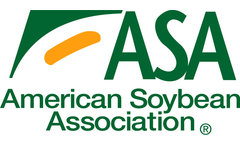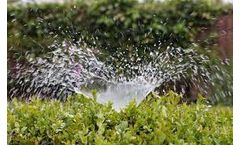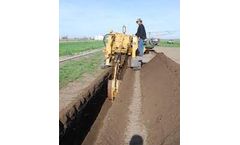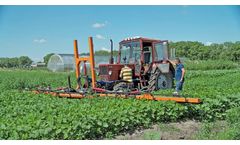Herbicide Applicator Articles & Analysis
21 articles found
Producers have different ways of obtaining points, such as field characteristics, reduced herbicide application, in-field measures, field-adjacent measures, water retention systems and combining multiple categories. ...
The system features a tube with a bactericide lining with an internal plug resistant emitter protected from root intrusion by an impregnated herbicide. A PLC with special software and a wireless phone connection provides for off-site control. ...
The reasons are many, including the absence of surface evaporation, as well as reduced weed growth, herbicide washout, maintenance, injury, and vandalism found with using conventional water application systems. ...
Probably the most cost-intensive and time-consuming operation in organic farming is the elimination of weeds at different stages of plant development. Due to the impossibility of herbicides application, the processing must be performed mechanically. ...
Almost all sales of sprayers in Western Canada today are comprised of High Clearance Sprayers. The pull-type market has seen a sharp decline with all of the features brought to you by High Clearance Sprayers. Self-Propelled applicators typically feature lots of power, large tanks, comfort and easy mobility from field to field. However, these features do come at a substantial cost to the farm: ...
This implement will become the go-to applicator on your farm for fertilizer top dressing and herbicide application. ...
With using a mechanical weeding method over herbicide application allows not only for weed control but also aeration, drainage and breaks the soil cap for further crop establishment. ...
Glyphosate, aminomethylphosphonic acid (AMPA), imazapyr, sulfometuron methyl (SMM), and metsulfuron methyl (MSM) were measured in streamwater collected during and after a routine application of herbicides to a forestry site in Oregon's Coast Range. Samples were collected at three stations: HIGH at the fish/no‐fish interface in the middle of the harvest/spray ...
Nearly 80% of all pesticides applied to row crops are herbicides, and these applications pose potentially significant ecotoxicological risks to non‐target plants and associated pollinators. In response to the widespread occurrence of weed species resistant to glyphosate, biotechnology companies have developed crops resistant to the synthetic‐auxin ...
A three-season research study was conducted at Embu Agricultural Research Station farm to determine the effect of glyphosate-based herbicides on weeds management and maize ( Zea mays L. ) performance under zero-tillage conservation agriculture practice. Glyphosate herbicide sprays were prepared from Roundup Turbo product at the rate of 2.5 L ha –1 and ...
To determine effects of multiple applications of herbicides on small constructed plant communities, Prunella vulgaris L.var. lanceolata Fern, Festuca roemeri (Pavlick) Alexeev, Clarkia amoena (Lehm.) ...
The effects of herbicide, insecticide, and fertilizer inputs on the common buttercup Ranunculus acris in field margins were studied in an experimental field study. The test design allowed us to investigate the single and combined effects of repeated herbicide, insecticide, and fertilizer applications in successive growing seasons. ...
Conflict between native amphibians and aquatic weed management in the Pacific Northwest is rarely recognized because most native stillwater‐breeding amphibian species move upland during summer, when herbicide application to control weeds in aquatic habitats typically occurs. However, aquatic weed management may pose a risk for aquatic species present in ...
A high population of barnyardgrass may attract an infestation of armyworms, which moves from the weed to feed on corn leaves. There are a variety of herbicide options for control of barnyardgrass in both preplant and postemergent situations. ...
At both locations, red clover was either interseeded into wheat or seeded after harvest, the red clover cover crop was eliminated with tillage or herbicide application, and corn was planted with three N rates (0, 90, and 180 kg N ha–1). ...
Averaging over 3-yr, no-tillage with glyphosate application reduced weed infestation (42 plants m–2) and increased faba-bean seed yield (1.73 Mg ha–1) in comparison with conventional tillage with glyphosate application (10 broomrape plants m–2, and 1.14 Mg ha–1 of seed yield). ...
Few herbicides are labeled for weed control when establishing alfalfa (Medicago sativa ...
Few herbicides are labeled for weed control when establishing alfalfa (Medicago sativa ...
An area of interest in precision farming is variable-rate application of herbicides to optimize herbicide use efficiency and minimize negative off-site and non-target effects. Site-specific weed management based on field scale management zones derived from soil characteristics known to affect soil-applied herbicide efficacy could ...
The AI plot had no surface drainage, hence no herbicide was lost through paddy-water discharge. However, SI plot lost about 38 and 49% of applied mefenacet and bensulfuron-methyl, respectively. The intermittent irrigation scheme using automatic irrigation system with a high drainage gate was recommended to be a best management practice for controlling the ...










